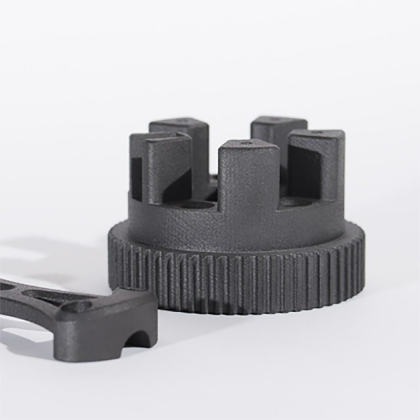Unlocking the Secrets: How to Get the Best Quotes for MJF 3D Printing and What Affects Pricing
As the world increasingly embraces additive manufacturing, MJF (Multi Jet Fusion) 3D printing has emerged as a game-changer in the industry. Known for its speed, precision, and ability to produce complex geometries, MJF 3D printing is gaining traction among businesses looking to innovate and streamline their production processes. However, navigating the landscape of MJF 3D printing can be daunting, especially when it comes to obtaining accurate pricing. Understanding how to obtain online instant quotes and what influences these prices is crucial for making informed decisions. In this article, we will explore the intricacies of MJF 3D printing, the steps to obtain quotes, the factors that affect pricing, and how to compare different offers effectively.

Understanding MJF 3D Printing
MJF 3D printing is an advanced additive manufacturing technology that utilizes a unique process to create high-quality parts. Unlike traditional methods, MJF employs a proprietary technique where a binding agent is selectively jetted onto layers of powdered material, which is then fused using heat. This results in parts that are not only strong but also possess excellent surface finish and intricate details. One of the primary advantages of MJF is its speed; it can produce parts significantly faster than other 3D printing methods, making it ideal for both prototyping and production runs. Industries such as automotive, aerospace, and healthcare are leveraging MJF for applications ranging from functional prototypes to end-use parts, showcasing its versatility and efficiency.
The Process of Obtaining Online Instant Quotes
Obtaining online instant quotes for MJF 3D printing services is a straightforward process that involves several key steps. First and foremost, you need to have a clear understanding of your project specifications. This includes details such as the material you wish to use, the dimensions of the part, and any specific design requirements. Most online platforms require you to upload your 3D model, typically in STL or OBJ format, which allows the quoting system to analyze the geometry. After uploading your model, you will fill out a form detailing your project needs, including the quantity and deadlines. Providing accurate specifications is vital as it directly influences the generated quote. In my experience, a friend once had an issue where vague details led to a quote that was significantly higher than expected. Thus, clarity and precision are essential to get the best possible price.
Factors Influencing Pricing in MJF 3D Printing
Several factors can influence the pricing of MJF 3D printing services. One of the primary considerations is the choice of material. Different materials have varying costs, and some may require specific handling or post-processing, which can add to the overall price. The print volume is another significant factor; larger quantities often benefit from economies of scale, resulting in lower costs per unit. Furthermore, the complexity of the design plays a crucial role. Intricate designs that require more time and resources to print will typically incur higher costs. Lead times also affect pricing; if you need a quicker turnaround, you may pay a premium for expedited services. Understanding these factors can help you anticipate costs and make adjustments to your project to stay within budget.
Comparing Quotes and Making the Right Choice
Once you have obtained multiple quotes from different MJF 3D printing providers, the next step is to compare them effectively. While price is an important factor, it should not be the sole consideration. Evaluate the quality of the prints, the reputation of the service provider, and their turnaround times. It's also beneficial to read reviews or seek recommendations from peers in your industry. A friend of mine once chose a cheaper option only to realize that the quality was subpar and resulted in additional costs for reprints. Thus, looking beyond just the price and considering factors such as service reliability and print quality can lead to a more satisfying outcome.
Making Informed Choices in MJF 3D Printing
In conclusion, the world of MJF 3D printing offers exciting opportunities for innovation, but understanding the quoting process and the factors that influence pricing is essential for making informed decisions. By grasping the basics of MJF technology, following the right steps to obtain online instant quotes, and considering the various pricing factors, you can position yourself to choose the best service for your needs. Remember that while price is important, the quality of service and final product should also weigh heavily in your decision-making process. With this knowledge in hand, you can confidently navigate the MJF 3D printing landscape and unlock its full potential for your projects.







